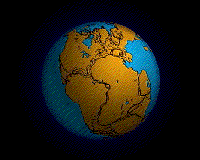 ANGELES NATIONAL FOREST, Calif. — The Station fire, which in over a month has burned away nearly a quarter of this vast, mountainous backdrop to the Los Angeles skyline, is finally just about out, sending all but a handful of firefighters home. Now, the scientists swoop in.
ANGELES NATIONAL FOREST, Calif. — The Station fire, which in over a month has burned away nearly a quarter of this vast, mountainous backdrop to the Los Angeles skyline, is finally just about out, sending all but a handful of firefighters home. Now, the scientists swoop in.And Todd M. Hoefen, a geophysicist, scooped up white and black ash as part of research to analyze “the impact of it, what blows out of these fires and what are people breathing.”
Fire, typically touched off by lightning strikes, has always been part of the life cycle of the wilderness here and elsewhere, to a large degree crucial to regenerating it. Most wildlife and landscape eventually come back.
But with the increasing frequency and size of fires — 7 of the state’s 10 largest wildfires have occurred in the last six years, and most were caused by people — scientists are intensifying study of the environmental aftermath of the changing burn pattern.









No comments:
Post a Comment